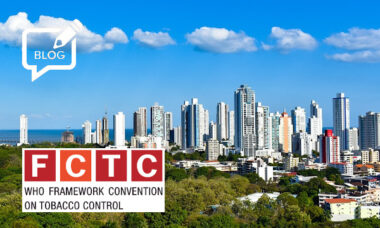 Tobacco control’s catchiest acronym is back later this year, with the next WHO FCTC COP (World Health Organization Framework Convention on Tobacco Control Conference of the Parties) due to be held in Panama in November.
Tobacco control’s catchiest acronym is back later this year, with the next WHO FCTC COP (World Health Organization Framework Convention on Tobacco Control Conference of the Parties) due to be held in Panama in November.
Not too much should be read into the fact that Panama is a country which bans both e-cigarettes and heated tobacco (though nicotine pouches are unregulated)…but not too much needs to be.
After all, the position of COP10 (as this tenth edition of the FCTC biennial event is known) on novel nicotine products is almost a given: it will be opposed to them. The clear goal of the FCTC, or at least of those who participate most actively in it and develop its policy if not of the original convention itself, is to eliminate use not just of combustibles but of all tobacco-related and nicotine-related products.
In that context, calls from the likes of the Coalition of Asia Pacific Tobacco Harm Reduction Advocates (Caphra) and the New Nicotine Alliance (NNA) for COP10 to embrace harm reduction are, however well-intentioned, unlikely to have any impact on the position that it adopts. They may, perhaps, sway a few individual delegates but the strength of the anti side seems almost unassailable.
If hopes for a turnaround in attitudes by the COP itself are quixotic, though, advocates for harm reduction can take some consolation from the way that the implacability of WHO/FCTC opposition may actually reduce its impact in some parts of the world.
How WHO intransigence weakens its influence
Certainly, its position has a noteworthy effect on policy in many lower-and-middle-income countries, and of course in broader terms of tobacco control (beyond the specific issue of reduced risk) it is taken very seriously worldwide. Its statements on novel nicotine products also provide support for those arguing the sceptical case, and may persuade some who are undecided.
But, especially in those countries with their own substantial public health and academic establishments, the WHO and FCTC are – at least on this particular topic – less of a factor than might be expected. Precisely because these global bodies’ attitudes appear unlikely to change, policy-makers who are at least slightly open to novel nicotine products are much less inclined to accept their contribution to the debate as definitive.
This does not mean the WHO and FCTC should be ignored (and nor, of course, does it mean that they are necessarily wrong). It does, though, mean that seeing the conclusions of the FCTC COP events as representative of actual tobacco control policy and practice on the ground, everywhere, is not realistic.
What should we look for at COP10, then? A certain amount of tea-leaf-reading will be necessary; given the unlikelihood of novel nicotine products being praised, as such, conclusions will have to be drawn from the relative vehemence or mildness of criticism.
And on that front, there could be some real developments in Panama this November.
A pronouncement on heated tobacco is due
At COP8, back in 2018, the meeting agreed to ask the WHO Secretariat to prepare a comprehensive report on “novel and emerging tobacco products, in particular heated tobacco products”. It was to “examine the challenges that novel and emerging tobacco products posed for the comprehensive application of the WHO FCTC, in particular those articles and guidelines referring to definitions and terminology and to tobacco smoke, and to provide information on the adequate classification of such products, such as heated tobacco products, to support regulatory efforts”.
COP9 in 2021 was originally supposed to respond to this report, but full discussion was postponed to this year’s COP10.
So, from November’s event we can likely expect a WHO FCTC pronouncement on heated tobacco. Given that this product category is so much closer to combustibles than e-cigarettes are, the position taken is highly unlikely to be a favourable one (could heated tobacco emissions become classified as tobacco smoke?), but it will be very interesting to see whether vapour is – at least by implication – described as comparatively acceptable.
There will likely also be some discussion of nicotine pouches, given their rapid emergence; and once again, while we shouldn’t expect a warm welcome, the way in which the category is described compared to combustibles and to other reduced-risk products could be significant.
Hoping that COP10 will be the one that adopts a harm reduction viewpoint is unrealistic. So is worrying that its almost certain opposition to harm reduction products will lead to a global ban overnight. But even if what it’s going to say is to some extent predictable, it will still play a part in shaping – albeit not dictating – the debate, and the devil (or angel) may be in the details.
– Barnaby Page TobaccoIntelligence staff
Photo: Mónica Iglesias







